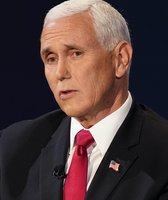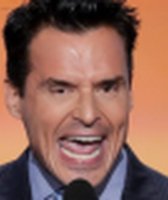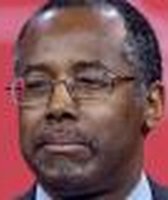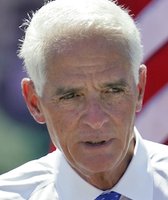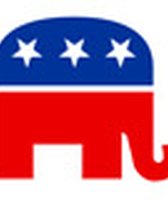Get PolitiFact in your inbox.
SUMMARY: This wraps up our series on key issues of the presidential election. This time, the economy. In a six-week series, we've examined issues from the presidential campaign. For each topic, we distilled the candidates' positions and presented some key rulings. Part 1 was taxes . Part 2 was Iraq. Part 3 was energy. Part 4 was health care . Part 5 was national security and foreign policy . This week, we take on the economy. Read all our rulings on the economy here.
THEIR PAST POSITIONS AND THEIR PLANS
John McCain
• Supported the Bush administration’s $700-billion plan to buy troubled securities.
• Advocates reduction of corporate taxes to spur economic growth.
• Proposes new $300-billion plan for the government to buy subprime mortgages and convert them to fixed-rate mortgages.
• Proposes a suspension on rules that say people age 70½ must begin cashing in retirement accounts, so they may avoid locking in recent losses.
• Wants to eliminate taxes on unemployment benefits.
• Will guarantee all savings, beyond normal limits, for six months.
• Cut the capital gains tax by half, to 7.5 percent, for two years.
Barack Obama
• Supported the Bush administration’s $700-billion plan to buy troubled securities.
• Offers a $500 tax credit to workers; will raise taxes on singles who make $200,000 or more and couples who make more than $250,000.
• Favors a temporary $3,000 tax credit to businesses for each new job created.
• Will temporarily allow people to withdraw up to 15 percent of their retirement money, to a maximum of $10,000, without penalty. (Normal taxes apply.)
• Favors mandatory 90-day freeze on some foreclosures.
• Wants the federal government to lend money to states and local governments in need of credit.
Key rulings for McCain
• On Obama's plan: Attacking Obama's point that his tax plan protects 95 percent of working Americans from higher taxes, McCain said, "It's not truthful in the respect that 50 percent or 40 percent of the American people — of taxpayers — American citizens don't pay taxes, federal income taxes." We consulted the nonpartisan experts at the Tax Policy Center. They said that the percent of taxpayers with zero or negative individual income tax liability will be 38 percent in 2009. That’s pretty close to 40 percent, the low end of the range McCain said. We rate his claim Mostly True .
• On blame for the financial crisis: In an October debate, McCain said, "The Democrats in the Senate and some members of Congress defended what Fannie and Freddie were doing. They resisted any change." McCain rightly notes that the 2005-06 efforts to regulate Fannie and Freddie were Republican-led and opposed by the Democrats, but McCain’s attempts to depict those efforts as an early warning that could have lessened the current credit crisis don’t wash. Even if the 2006 effort to strengthen oversight had succeeded, it’s debatable whether it would have averted the subprime crisis. We rate his statement Half True .
Key rulings for Obama
• On the economy: In a Democratic debate in April, Obama said, "We're seeing greater income inequality now than any time since the 1920s." The U.S. Census compiles data on income distribution on a year-to-year basis. Since 1967, it’s clear that the top 5 percent of all households are capturing a growing share of the nation’s aggregate income. From 1917 to 1998, the income share of the top 10 percent dropped and then began rising again, following a U-shaped curve, according to a historical analysis of U.S. tax returns by economists Thomas Piketty and Emmanuel Saez published in 2003 in the Quarterly Journal of Economics . Piketty and Saez found that economic inequality grew further by 2005. That year, the top 1 percent of Americans — people with incomes of more than $348,000 — received their largest share of national income since 1928. We find Obama’s statement to be True .
• On McCain: Obama attacked McCain's economic philosophy in a Nevada speech, saying that McCain economic adviser Phil Gramm is "the architect of some of the deregulation in Washington that helped cause the mess on Wall Street." First off, Phil Gramm might view the title "architect of deregulation" as a compliment, though he might prefer the title "architect of regulatory efficiency." As a U.S. senator, Gramm promoted two bills that curtailed regulation: the Gramm-Leach-Bliley Act of 1999 and the Commodity Futures Modernization Act of 2000. But these bills had other supporters, and President Bill Clinton signed both into law. Now, the Wall Street carnage is still being autopsied, but most Wall Street watchers agree that light regulation allowed irresponsible lending and mortgage fraud to go unchecked. Finally, Gramm is no longer a chief adviser to the McCain campaign. He resigned in July. So there’s some truth here, but it also seems like Obama is exaggerating to make a point. We rate it Half True .
Our Sources
See individual items.












